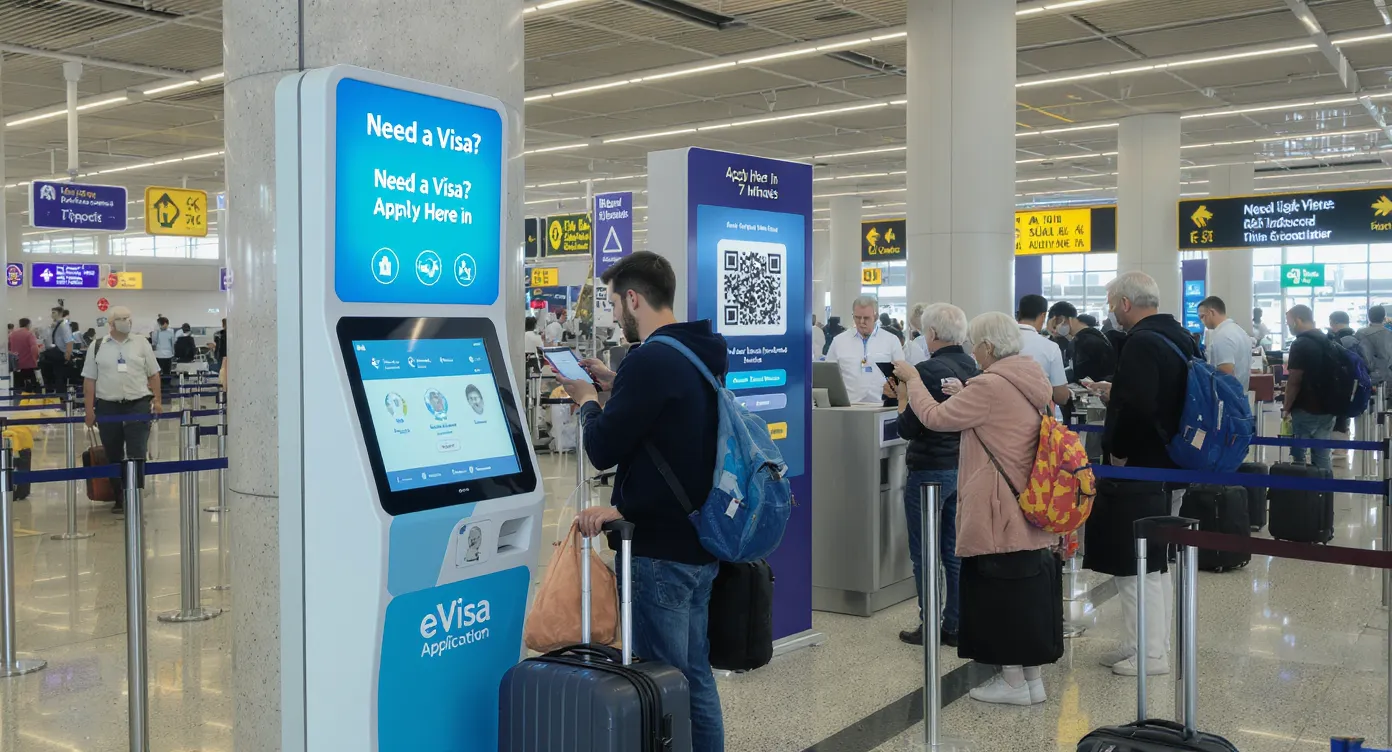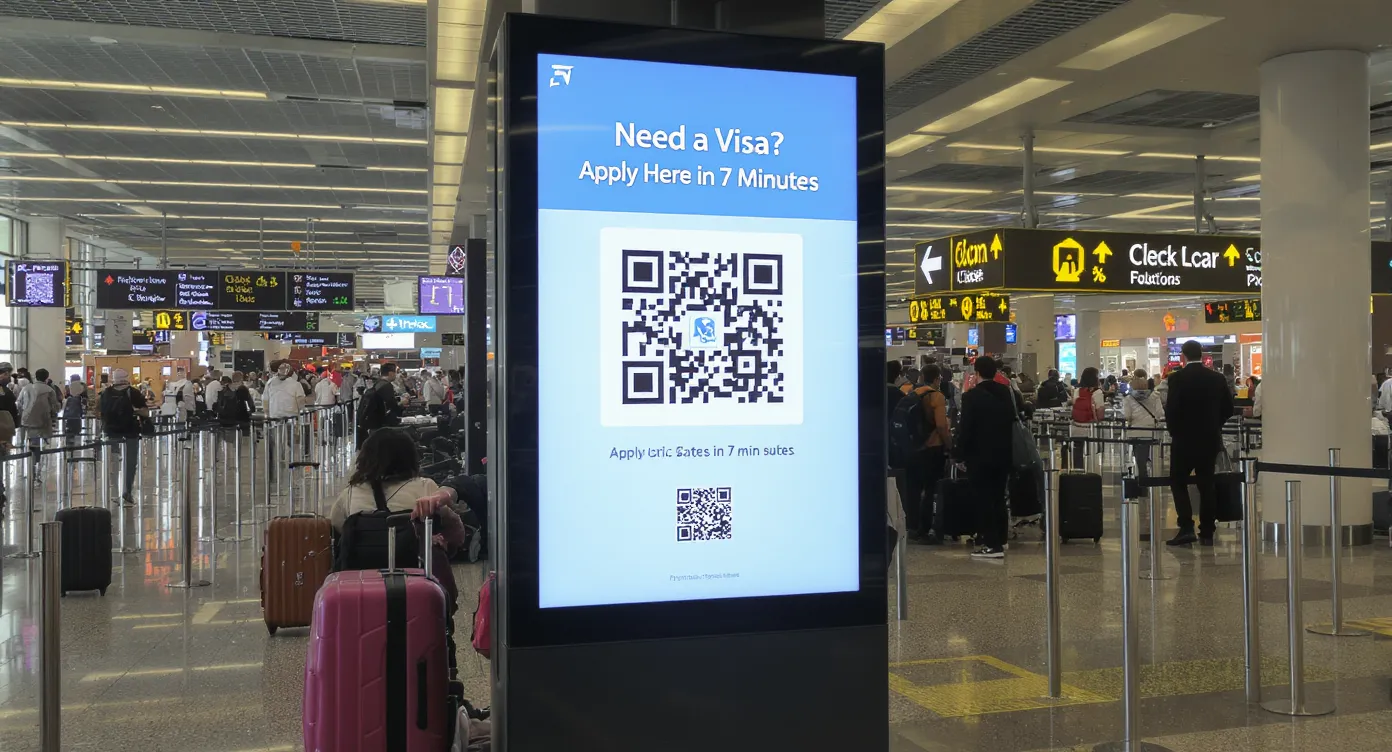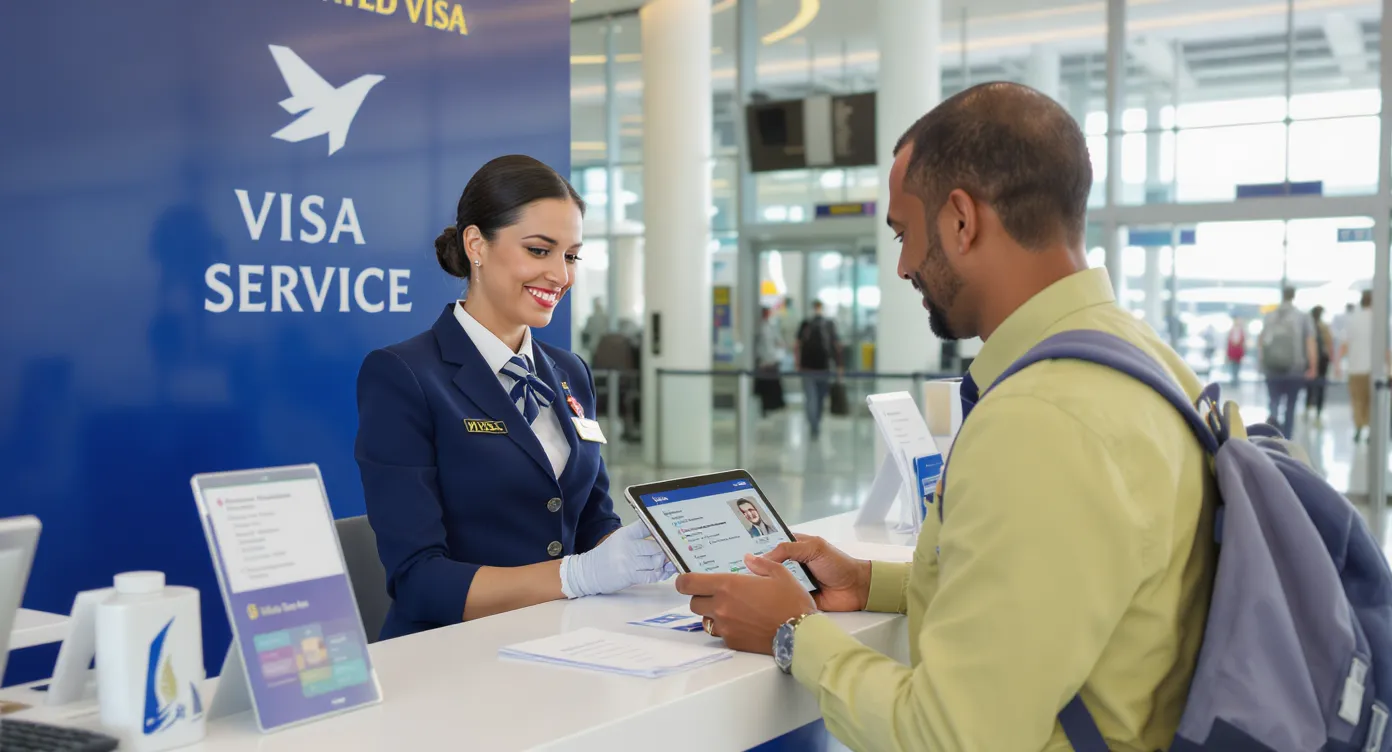How to Offer eVisas at the Airport: Kiosk, QR, and Agent‑Assisted Models

Travelers who make it all the way to the departure hall only to discover they still need an electronic visa (eVisa) create headaches for everyone: gate agents scramble, queues balloon, and too often a denied boarding wipes out both revenue and goodwill. Yet those same pain points present an untapped opportunity for airports, airlines, and ground-handling companies to rescue the booking while generating high-margin ancillary income.
This playbook explains three proven ways to sell and process eVisas right at the airport—self-service kiosks, QR-triggered mobile journeys, and agent-assisted counters—and shows how each model plugs into a modern visa management platform such as SimpleVisa.
Why Offer eVisa Services On-Site?
- Recover endangered bookings: IATA estimates that 3–5 % of passengers are turned away annually for documentation issues. Most simply rebook with a competitor.
- Elevate customer experience: transforming a crisis into a “problem solved” moment drives Net Promoter Score and loyalty.
- Unlock ancillary revenue: our own data (9.4 million bookings, Jan 2024–Jun 2025) shows average eVisa margins of 30–45 %, higher than seat selection or extra-bag fees.
- Reduce operational disruption: real-time eligibility checks and digital submissions cut average check-in time by 2–4 minutes per impacted passenger.
Three Airport Delivery Models at a Glance
| Model | How It Works | Time-to-Market | Best For | Typical Attach Rate |
|---|---|---|---|---|
| Self-Service Kiosk | Touch-screen terminal pre-loaded with an eVisa application flow. Traveler scans passport, pays by card or NFC, prints receipt/QR. | 8–12 weeks (hardware & API) | Hub airports with high O-D traffic and multiple visa-dependent routes | 10–14 % of eligible pax |
| QR-to-Mobile Journey | Posters, digital signage or boarding-pass inserts display a dynamic QR. Passengers complete the secure application on their own phone, often in < 7 minutes. | 2–4 weeks (no hardware) | Outstations, gates, lounges; budget-conscious roll-outs | 6–9 % |
| Agent-Assisted Desk | Staff use a tablet or desktop dashboard to guide travelers step-by-step, scan docs, collect payment, and escalate complex cases. | 4–6 weeks (training & portal) | Premium carriers, VIP lounges, travelers needing extra help | 60–70 % conversion among referred pax |
1. Self-Service Kiosks: Automate and Upsell on the Spot
A dedicated visa kiosk operates like an airport check-in machine but funnels passengers through a streamlined eVisa workflow.
How it works:
- Passport MRZ is read in < 2 seconds; nationality and destination rules auto-populate the correct visa product via the SimpleVisa API.
- A camera captures a compliant photo; the traveler confirms trip details and pays.
- The kiosk prints a QR receipt + status code. Approvals that meet “instant grant” rules sync directly to the airline DCS; pending applications trigger a real-time alert so gate staff know when the permit arrives.
Operational tips:
- Position kiosks before security but near check-in to intercept issues early.
- Support Apple Pay, Google Pay, and multi-currency cards; 34 % of last-minute eVisa buyers use wallet payments.
- Configure dual screens: one for the user, one facing staff to monitor progress and offer help.
Performance snapshot (mid-size GCC hub, Q2 2025):
- 11 kiosk units processed 6 400 eVisas in 90 days.
- 93 % approval rate, average processing time 6 m 12 s.
- Ancillary revenue +US $380 k; denied-boarding incidents down 41 % year-on-year.
2. QR-Triggered Mobile Journeys: Lightning-Fast, Zero Hardware
When capital expenditure or floor space is limited, a simple QR code can turn any sign, boarding-pass footer or inflight magazine into a self-serve eVisa portal.
Best practices:
- Use dynamic QR links that pre-fill flight number, arrival airport and carrier branding for friction-less handover.
- Add a countdown message (“Average approval in 7 min; do it before boarding closes!”) to drive urgency.
- Surface live chat inside the mobile flow—SimpleVisa’s white-label widget includes 24/7 multilingual support that resolves 92 % of queries without agent escalation.
Case example: A European LCC taped branded QR stickers on bag-drop belts across 38 outstations. Within eight weeks the carrier saw a 7.8 % attach rate on Schengen-bound flights and recouped the roll-out cost in under one month.

3. Agent-Assisted Counters: Personal Service, Higher Basket Size
Some travelers—elderly, families, or those with complex itineraries—prefer human assistance. An agent-assisted desk combines concierge service with real-time digital processing.
Workflow:
- Agent launches a secure SimpleVisa back-office portal, scans passport, uploads documents.
- System suggests the correct visa category and fee; upsell prompts (express processing, delivery to email and WhatsApp, printed copy) appear.
- Payment captured via POS or airline’s existing PSP integration; a digital receipt and gate pass print automatically.
Why it works:
- Higher willingness to pay for peace of mind: average order value is 1.6× kiosk sales thanks to priority and add-on print services.
- Accessibility: complies with EC 1107/2006 assistance regs and ADA guidelines.
- Conversion: Airlines report > 65 % success among passengers referred by check-in staff.
Training blueprint: Adapt the 7-day agenda in our “How to Train Customer Support Teams on eVisa Rules in One Week” guide, focusing on scenario drills and escalation matrices.

Security & Compliance Checklist
- End-to-end encryption (TLS 1.3) and tokenized payments.
- Biometric liveness detection at kiosks meets ICAO 9303 and ISO 30107-3.
- GDPR/PCI-DSS alignment; servers hosted in ISO 27001-certified regions.
- Immutable audit logs for government or airline regulators.
- Role-based access and SSO options for airline IT.
For a deeper RFP template see “Top 8 Security Features to Demand in Any Electronic Visa Solution”.
Commercial Models and ROI Scenarios
| Revenue Mechanism | Example Fee | Partner Share | Gross Margin to Airport/Airline |
|---|---|---|---|
| Flat Service Fee | US $29 per eVisa | 40 % | ~US $11.60 |
| Tiered Commission | 35 % base, 45 % if monthly sales > 2 000 | Variable | Up to US $13 per sale |
| Dynamic Mark-Up | 15 % mark-up on destination-set fee | 100 % | Entire mark-up retained |
Assume a hub handling 1 000 daily pax requiring visas with a conservative 8 % attach rate and US $11 net margin: annual upside ≈ US $3.2 million, plus a measurable drop in denied-boarding costs.
Read our full breakdown in “7 Revenue-Sharing Models for Online Visa Processing Partners”.
Implementation Roadmap
- Audit routes & pax mix: Identify high-risk corridors (e.g., India, Kenya, Vietnam) using historical denial data.
- Select model(s): Many airports deploy QR codes first, then add kiosks in peak zones and an agent desk for premium lounges.
- Integrate via API or No-Code Widget: SimpleVisa offers both; kiosks call the API directly, whereas QR and agent flows can use the white-label web app.
- Run a 90-day pilot: Track KPIs—conversion rate, attachment revenue, average handling time—mirroring the dashboard in “5 KPIs to Track After Deploying a Visa Management Platform”.
- Scale & optimize: A/B test fee displays, language defaults and visual cues; feed learnings back into signage and agent scripts.
Key Takeaways
- Last-minute visa problems don’t have to end in denied boardings; they can become profitable service touchpoints.
- Self-service kiosks, QR-led mobile flows, and agent-assisted counters each serve distinct traveler segments and operational contexts.
- With plug-and-play APIs, secure payment gateways, and white-label UX, launching on-airport eVisa services is now a matter of weeks—not months.
Ready to rescue more bookings and add a seven-figure revenue line? Book a live demo and see how SimpleVisa can bring kiosk, QR, or agent-assisted eVisa processing to your airport in record time.